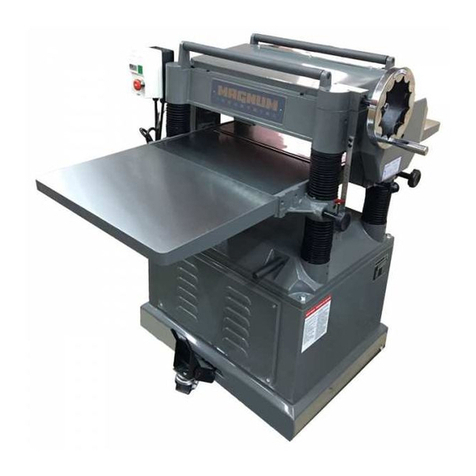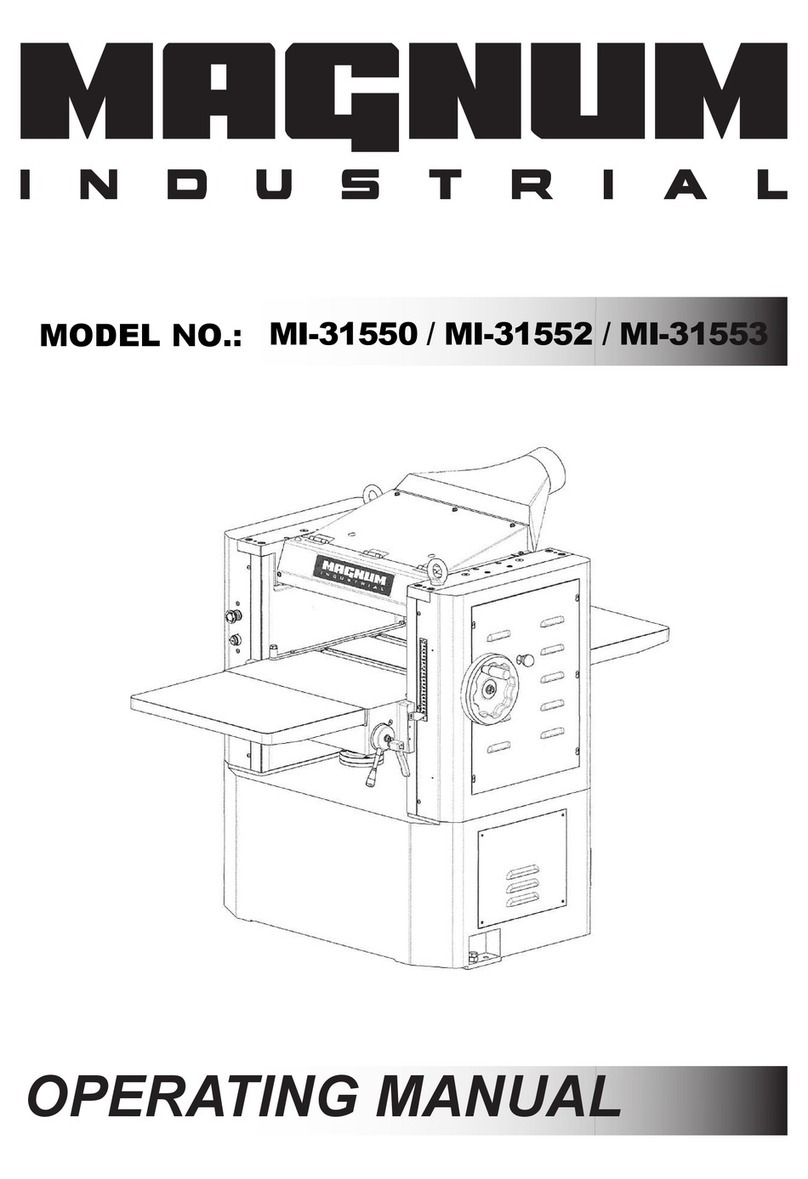
6
ADJUSTMENTS (cont.)
ADJUSTING / REPLACING KNIVES FOR THE SPIRAL CUTTERHEAD
WARNING! MAKE CERTAIN THAT THE MACHINE IS DISCONNECTED FROM THE POWER
SOURCE BEFORE ANY ADJUSTMENTS ARE MADE.
WARNING! *** Be VERY CAREFUL when handling the knives or cutter tips as they are
EXTREMELY SHARP and can cause serious injury!!! ***
This 13" cutterhead is equipped with 26 indexable cutter inserts. Each cutter insert can be rotated to
reveal one of its two cutting edges. Therefore, if one cutting edge becomes dull or damaged, simply
rotate it 90° to reveal a fresh cutting edge.
In addition, each cutter insert has a reference dot on one corner. As the cutter insert is rotated, the
reference dot location can be used as an indicator of which edges are used and which are new.
When the reference dot revolves back around to its starting position, the cutter should be replaced.
WARNING! NEVER GRASP CUTTERHEAD
BY HAND AS THIS WILL
RESULT IN SERIOUS INJURY!
To rotate or change cutter tip inserts:
1. Face the rear of the machine. Remove the Dust Port. Refer back to the section labeled
ATTACHING DUST PORT in the ASSEMBLY section page 13 for information on removal.
2. Use the handle to lower the cutterhead assembly down to about 1” on the scale.
3. Insert the supplied Hex wrench through the hole located on the side of the machine beside
the Repeat Cut indicator. Rotate the cutterhead to a position where a cutter tip is visible. SEE
FIG. 7. next page. (You may have to raise or lower cutterhead to be able to insert the Hex
wrench into the cutterhead)
4. While holding the hex wrench to prevent cutterhead rotation, remove the cutter tip screw
using the provided Torx T-wrench allowing the tip to be removed.
5. Carefully clean all dust and dirt off the cutter tip and the cutterhead seat. Replace or rotate the
cutter insert so a fresh sharp edge is facing outward. If available, use pitch remover to be sure
all wood residue is off the cutterhead, cutter insert, and screws, before attempting to rotate or
replace them. Using a shot of compressed air is also helpful. Be sure to wear safety glasses
when using compressed air.
6. Lubricate the Torx screw threads with light machine oil and wipe the excess oil off the threads.
Install cutter tip insert and torque the Torx screw to 48-50 lb-ft.





























